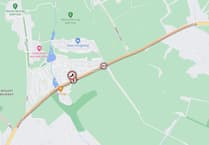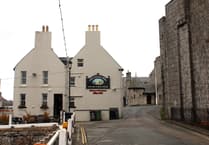Following up on our story about the Greylag Geese Manx Birdlife has responded to what they describe as the ’well-founded concerns’ over the numbers in the island.
Managing director of Manx BirdLife, Neil Morris, said: ’We would look forward to working constructively with interested parties in resolving the problem.’
However Mr Morris wanted to correct the assumption that the creation of a protected bird sanctuary at the gravel pits up at the Ayres had been the cause of the dramatic increase in the numbers of geese.
He said: ’The large late summer nursery, and the mass autumnal and winter evening roost, that gather on the former gravel pits at the Point of Ayre is not the root cause of the problem. It is merely a symptom.
’Attempts to prevent the birds from roosting on the site will simply push them somewhere else. There are other suitable roosting sites; and while plentiful breeding and feeding areas remain across the island, the geese will continue to proliferate.’
Mr Morris went on to say that Greylags are not the only type of geese who are a potential nuisance in the island: ’It is worth commenting on two more species that are equally adept at "going feral".
’The island hosts a modest but increasing population of some 25 resident feral pairs of Canada geese.
’Unless these are brought under control soon, they too will soon prove problematic. Canada Geese are larger and heavier and just as aggressively territorial as Greylag Geese when nesting.
’There are also eight Barnacle Geese at large. It is presumed that these originate from captivity, though recent research has shown that this species can occasionally establish new resident populations, borne of wild birds that decide not to migrate back to their Icelandic, Scandinavian and Arctic breeding grounds.
’Effective solutions are not easy once such problems are out of control. It is vital that newly arising problems are "nipped in the bud".’
How we should
control them?
As a conservation organisation, Manx Birdlife serves the interests of our native species. However, it is equally committed to animal welfare.
Mr Morris said: ’From among the hundreds of resident feral Greylag geese in the Isle of Man, just four or five pairs nest at the Point of Ayre, on islands in the quarry pits (now part of the Manx BirdLife Point of Ayre National Reserve).
’Nonetheless, they are a nuisance. They are highly dominant and territorial, ousting native breeding species.
’Many conservation projects have struggled with feral geese.
’Subject to further discussions with the Department of Environment, Manx BirdLife might seek a licence to control these feral breeders on its nature reserve.
’Shooting has been tried by others in the past, but this proved to be an inefficient method of control and ultimately failed (as others have experienced elsewhere). Winter shoots also risk killing genuinely wild and rare geese from overseas.
’Pricking unhatched eggs in the nest is perhaps the most effective and humane method of control, though this is challenging in practice.’
Prioritising
our native species
’Manx BirdLife believes, first and foremost, that the island should cherish and protect its native wildlife. That is, the wild species which are resident here or arrive naturally.
’Where the interests of our characteristic and charismatic avifauna are put at risk by species brought here by people - and which would never have arrived here naturally - we must put our native species first.
’There are, of course, both conservation and welfare considerations to be taken into account when discussing proposed control of animals. Effectively safeguarding our Biosphere is ’to do the right thing’. Efficiently going about this is ’to do the thing right’. Resources must be applied prudently. It is far more cost-effective to act sooner than later.
’At the end of the day, we have a choice - to look after our natural heritage, or to allow the landscape to be filled with out of place exotics that destroy the island’s character and its ecology.’
A statement from DEFA on the situation said: ’The department has been monitoring Greylag geese since numbers started to rise significantly in the island almost 20 years ago - when we discussed the matter with the MNFU. Farmers were empowered to manage their own land through a general licence in order to prevent serious damage to agriculture - but numbers have not fallen.
’They rose rapidly from around 200 in 2002, mainly in the north of the island, but peak counts at the largest roost have settled down to around 1,500 birds in recent years. DEFA has always been open to discussions with representative organisations and a coordinated approach may be required to achieve a significant reduction.’




